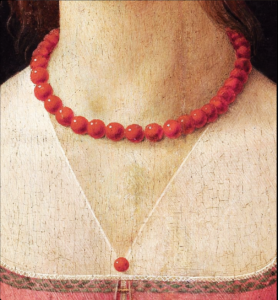Have you ever been captivated by a painting? The kind of art that transports you to another world, evokes deep emotions, or simply leaves you in awe of its beauty? That is the power of fine art. It may come in various forms, but one thing remains constant – the ability to move and inspire us. In this article, we will delve into the world of fine art, exploring its significance and the enduring appeal it holds for generations to come.
What is Fine Art?
Fine art is a visual form of expression that represents the artist’s imagination, emotions, and technical skill. It encompasses various mediums, such as painting, sculpture, drawing, and more. However, for the purpose of this article, we will focus mainly on the enchanting world of oil painting.
Oil painting has been one of the most prominent and admired forms of fine art for centuries. The unique qualities of oil paint allow artists to create rich, vibrant colors, texture, and depth in their creations. The slow drying time of oil paint also allows for greater manipulation and blending of colors, resulting in stunning visual effects that captivate the viewer.

The Journey of an Oil Painting
Creating an oil painting is a meticulous process that requires patience, talent, and a deep understanding of the medium. The artist begins with a blank canvas, meticulously primed and prepared. The initial sketches and compositions are laid out, setting the stage for the masterpiece to unfold.
Layer by layer, the artist applies the oil paint, careful strokes breathing life into the canvas. From vibrant landscapes to delicate still lifes and captivating portraits, each brushstroke contributes to the overall composition, creating harmony and balance. The artist’s creative vision guides their hand, as they blend colors, work with light and shadow, and infuse emotion into the very fabric of the painting.
Time becomes an essential element in oil painting. As layers of paint are added, the work evolves. The drying process enables the artist to revisit and refine the piece, enhancing its depth and complexity. This cyclical nature allows for a continuous dialogue between the artist and their creation. It is this symbiotic relationship that brings an oil painting to life, bridging the gap between reality and the artist’s imagination.

Jean-Baptiste Oudry: Svan och hund.
NM 7041
The Power of Wall Art
Once completed, an oil painting finds its natural home on the walls of galleries, museums, and private collections. Wall art has existed for millennia, serving as a testament to human creativity and an integral part of human culture. The act of displaying a piece of art on a wall is more than mere decoration; it is an act of recognition and celebration.
A well-chosen piece of wall art has the power to transform an entire space. It can evoke a particular mood or create a focal point that draws the viewer in. The beauty of wall art lies in its versatility – it can be a bold statement piece, subtly blending into the surroundings, or a conversation starter that sparks curiosity and contemplation.
Whether it be an oil painting that transports us to a serene countryside, a vibrant abstract piece that stimulates the senses, or a thought-provoking contemporary work, wall art has the ability to enrich our lives, creating a harmonious and inspiring environment.
The Enduring Impact of Fine Art
Why does fine art continue to captivate the human imagination, even in a world filled with ever-evolving technology and entertainment options? The answer lies in its timeless nature. Fine art has the power to transcend time, allowing generations to connect with the emotions, stories, and beauty captured by the artist’s hand.
An oil painting hanging on a wall becomes a portal, bridging the past and the present. It connects us to the artist’s vision, their hopes and dreams, their perspective on the world. Fine art speaks a universal language, touching the depths of our souls and stirring something within us that cannot be explained.
Moreover, fine art serves as a reflection of history and culture. It documents the spirit of the times, offering unique insights into the collective consciousness and the evolution of societies. Through the brushstrokes of artists, we gain an understanding of the human experience, past, present, and future.
Conclusion
Fine art, particularly the enchanting world of oil painting, holds an everlasting appeal for art enthusiasts and novices alike. Its ability to captivate, inspire, and transport us to other worlds is unrivaled. As we admire a well-executed oil painting hanging on a wall, we become part of a grand tradition – a timeless connection between artist, artwork, and observer.
Let us continue to celebrate and cherish fine art, for it is an essential part of our cultural tapestry. Whether it be the vibrant strokes of a landscape or the profound emotions conveyed in a portrait, the beauty of fine art reminds us of the power of human creativity. So next time you find yourself standing before a stunning oil painting, take a moment to appreciate the journey it took to create such a masterpiece.